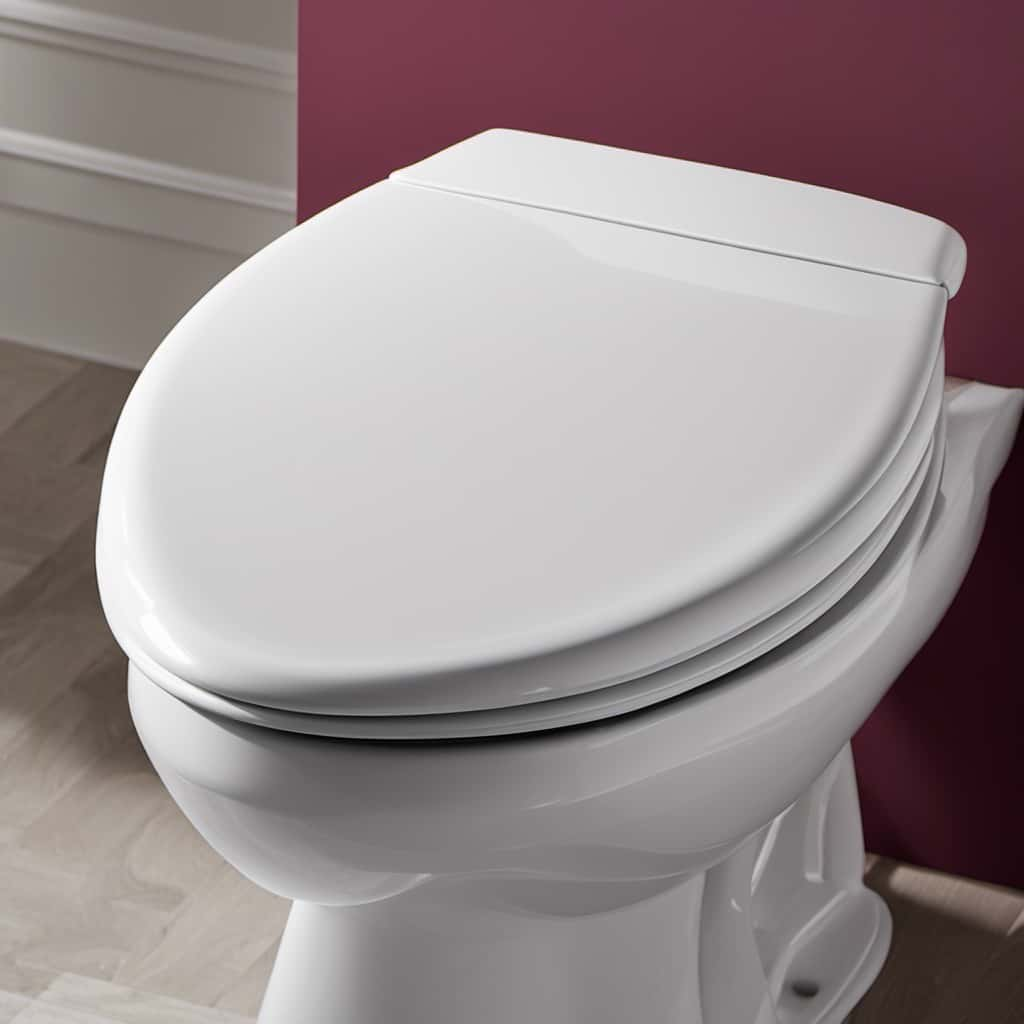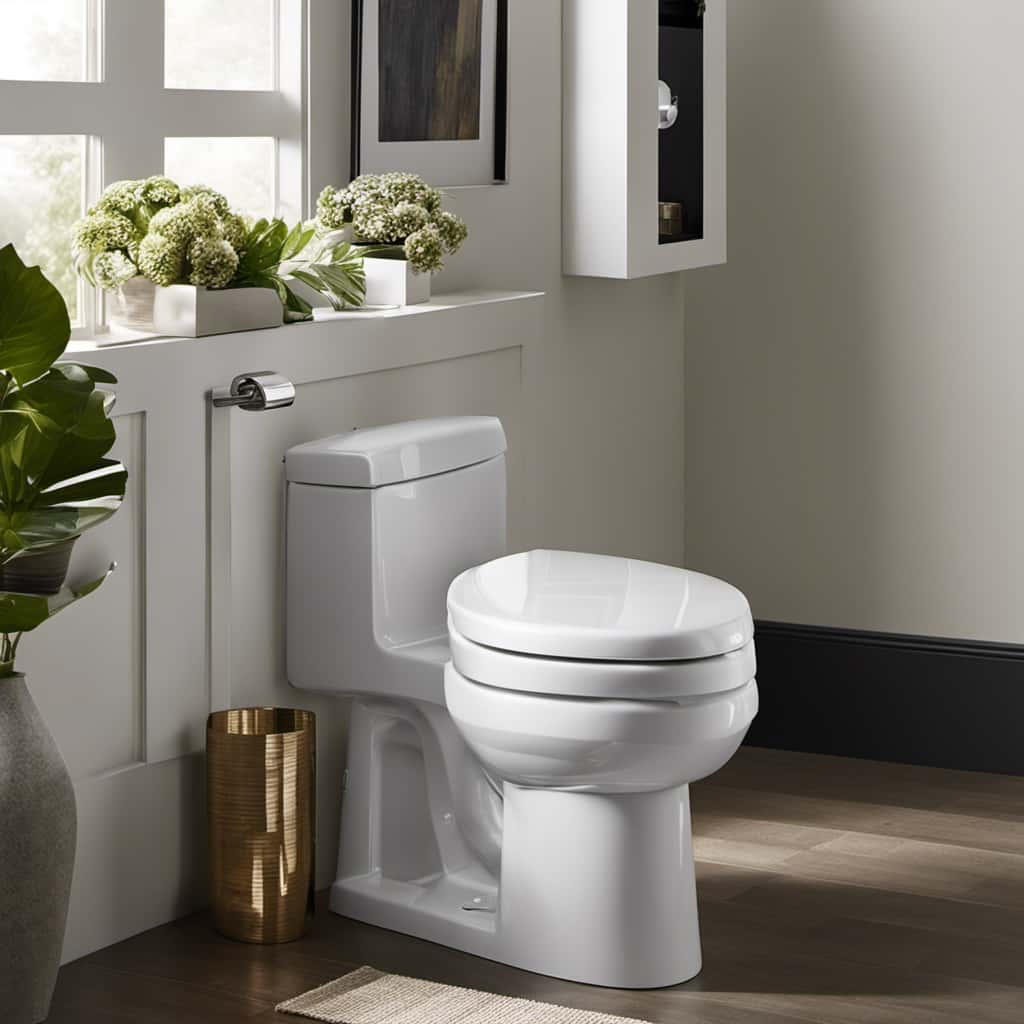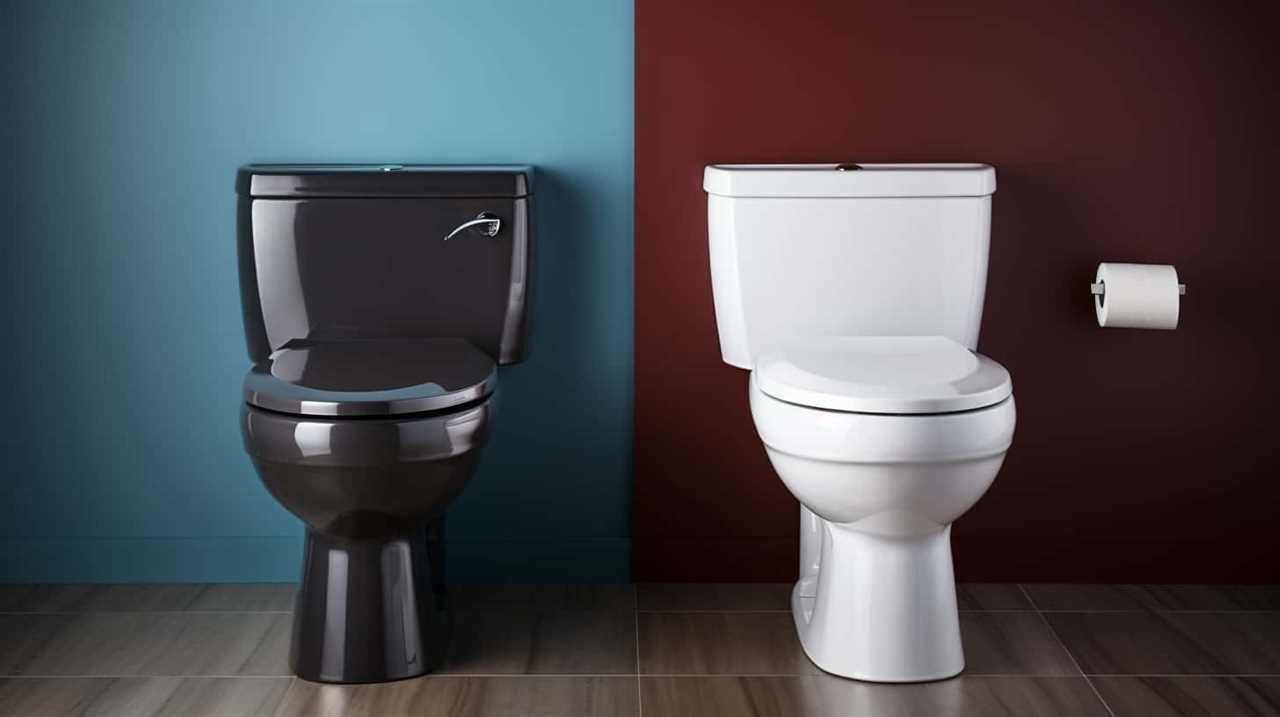We’ve all been there – the dreaded moment when you flush the toilet and it starts to fill up instead of draining. It’s a perplexing and frustrating problem that can leave us feeling helpless.
But fear not, we’re here to shed some light on the possible causes of this issue. From a clogged toilet drain to a faulty flapper valve or a malfunctioning fill valve, we’ll explore the common culprits and provide solutions to get your toilet back to its flushing glory.
So, let’s dive in and unravel the mystery together.
Key Takeaways
- A clogged toilet drain can cause the toilet to fill up when flushed.
- A faulty flapper valve can also cause the toilet to fill up when flushed.
- A malfunctioning fill valve can cause the toilet to fill up when not in use.
- A blocked vent stack or a sewer line backup can also result in the toilet filling up when flushed.
Clogged Toilet Drain
When a toilet fills up when we flush, it’s often due to a clogged toilet drain. A clog in the drain pipe can prevent water from flowing freely, causing it to back up into the toilet bowl. This can be a frustrating and messy problem to deal with, but there are a few solutions you can try before calling a professional plumber.

One option is to use a toilet plunger to try and dislodge the clog. Make sure to use a plunger specifically designed for toilets, as it has a flange that creates a seal around the drain.
If plunging doesn’t work, you may need to call a professional plumber who can use specialized tools to remove the clog and restore proper drainage.
Faulty Flapper Valve
To continue our discussion from the previous subtopic, another possible reason for a toilet filling up when we flush is a faulty flapper valve.
The flapper valve is a crucial component of the toilet tank that controls the flow of water into the bowl. Over time, the flapper valve can become worn or damaged, preventing it from properly sealing the tank and allowing water to continuously flow into the bowl.

To fix this issue, a flapper valve replacement may be necessary. This involves removing the old flapper valve and installing a new one. Alternatively, the flapper valve may just need a simple adjustment to ensure a tight seal. Both of these solutions can be easily done by homeowners with basic plumbing knowledge and tools.
Malfunctioning Fill Valve
Now let’s delve into the next potential cause of a toilet filling up when we flush: a malfunctioning fill valve. When the fill valve malfunctions, it can lead to water continuously flowing into the toilet tank, causing it to fill up even when not in use. To troubleshoot and fix this issue, here are some important steps to consider:
- Check the water level: Ensure that the water level isn’t too high or too low, as this can indicate a problem with the fill valve.
- Inspect the fill valve: Look for any visible signs of damage or wear and tear on the fill valve.
- Clean the valve: Remove any debris or sediment that may be causing the valve to malfunction.
- Adjust the fill valve: Make necessary adjustments to the fill valve to regulate the water flow properly.
- Replace the fill valve: If all else fails, replacing the fill valve may be your best option.
By following these fill valve troubleshooting steps, you can effectively address the issue of a toilet filling up when you flush.
Blocked Vent Stack
We encountered a blocked vent stack as another possible cause of the toilet filling up when we flush.

Ventilation issues can occur when the vent stack, which is responsible for allowing air to flow through the plumbing system, becomes blocked. This blockage can be caused by debris such as leaves, bird nests, or even ice in colder climates.
When the vent stack is blocked, it prevents proper airflow and can lead to negative pressure in the plumbing system, causing the toilet to fill up when flushed.
To prevent this issue, regular plumbing maintenance is crucial. It’s important to inspect and clean the vent stack periodically to ensure it remains clear of any obstructions.
Sewer Line Backup
Another potential cause of the toilet filling up when we flush is a sewer line backup. Sewer line backups can occur due to various reasons, and it’s important to understand the causes to prevent future occurrences. Some common causes of sewer line backups include:

- Tree roots infiltrating and clogging the sewer pipes
- Accumulation of debris and grease in the pipes
- Structural damage to the sewer line, such as cracks or collapses
- Improper disposal of items like diapers, wipes, or feminine hygiene products, which can lead to blockages
- Inadequate sewer line maintenance, including infrequent cleaning and inspections
To prevent sewer line backups, regular sewer line maintenance is crucial. This includes routine cleaning and inspections to identify and address any potential issues before they escalate. By taking proactive measures and being mindful of what goes down our drains, we can minimize the chances of experiencing a sewer line backup.
Conclusion
In conclusion, a toilet filling up when flushed can be caused by a clogged drain, a faulty flapper valve, a malfunctioning fill valve, a blocked vent stack, or a sewer line backup. It’s important to identify and address the specific issue promptly to prevent further damage.
Did you know that according to a study, around 20% of toilet clogs are caused by excessive toilet paper usage? Remember to use toilet paper in moderation to maintain a properly functioning toilet.










